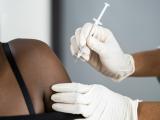Dec 14, 2011
Ebola drug cleared for clinical trials
The US Food and Drug Administration has granted approval to Tekmira Pharmaceuticals Corp., of Vancouver, to begin clinical trials of its antiviral drug for Ebola fever, according to a press release today from Joint Project Manager Transformational Medical Technologies (JPM-TMT), a Department of Defense (DoD) program that is funding the drug. The drug, called TKM-Ebola, has been shown effective in non-human primate studies, according to Tekmira. Ebola virus is considered one of the world's deadliest. The drug may also pave the way for treatments for other viruses that cause hemorrhagic fever, the JPM-TMT said in the release. The drug is being developed under a DoD contract worth up to $140 million, which was awarded in July 2010.
Jul 20, 2010, CIDRAP News item on the contract
Survey found 3% to 5% dengue infection rate in Key West in 2009
A serologic survey by the Centers for Disease Control and Prevention (CDC) suggests that 3% to 5% of residents in the Old Town area of Key West, Fla., had dengue virus infections in the late summer of 2009, according to a report published online today by Emerging Infectious Diseases. The finding shows the potential for the reemergence of dengue virus in subtropical parts of the United States, the authors said. The survey was conducted after a dengue infection was reported in a person who had traveled to Key West. The researches chose 911 households within 1 kilometer of where the index case had stayed; they were able to test 240 residents in 170 households. Thirteen (5%) of the residents tested positive for acute (2), recent (6), or presumptive recent (5) dengue infections. Also, 16 other people had evidence of previous dengue infections, with antibodies against multiple dengue serotypes. Infection was more likely
in those who kept windows open more than half the time, had a yard more than half covered with vegetation, had a bird bath, or reported getting mosquito bites at work. All the infections seemed to have been locally acquired, and another 63 cases involving the same dengue strain were reported in the area in 2010, the report says. In areas where dengue could reemerge, "Awareness among healthcare providers should be increased for optimal patient management and to limit outbreaks," the authors state.
Europe's ability to detect novel H3N2 found wanting, ECDC says
Europe has not detected the triple-reassortant H3N2 swine-origin (trH3N2) viruses that have been detected in US residents, but its ability to detect them is lacking, the European Centre for Disease Prevention and Control (ECDC) said in a risk assessment update on the situation yesterday. In the update, which notes the 11th US case of trH3N2 infection that was confirmed by CDC officials Dec 9, the agency says that no
such viruses have been detected in European pigs. It does describe, however, "weak veterinary surveillance for influenza throughout the EU." The trH3N2 found in the United States contains genetic material from the 2009 H1N1 flu virus. The ECDC also says that Europe has good capacity to detect the novel virus as influenza A viruses but has "restricted capability to subtype these viruses." The agency adds, "Therefore it is important that all these viruses should be sent to the WHO Collaborating Centre in London." The update says Europe is fine-tuning detection protocols to better subtype flu viruses and is assessing EU reference labs about their capabilities and strategies.
Dec 13 ECDC update
Global malaria deaths drop but more funding needed, WHO says
Since 2000, deaths rates from malaria have fallen by more than 25% worldwide and by 33% in Africa, but funding shortages may threaten gains against the disease, according to an annual malaria report issued by the World Health Organization (WHO) yesterday. In 2010 an estimated 650,000 people globally died from malaria, down 36,000 (5.5%) from the year before, the report said. Africa accounted for 91% of those deaths, and children under 5 years old accounted for 86%. Estimated malaria cases totaled 216 million for 2010, 81% of which occurred in Africa. "Coverage of at-risk populations with malaria prevention and control measures increased again in 2010, and resulted in a further decline in estimated malaria cases and deaths," said WHO Director-General Dr Margaret Chan in a WHO release. "But there are worrisome signs that suggest progress might slow," she added, referring to international funding for malaria control. The
amount reached $2 billion in 2011, compared with $1.7 billion in 2010, but is projected to drop to $1.5 billion in 2015. Annual funding remains significantly below the $5 billion to $6 billion needed to achieve global malaria targets, according to the report.
Dec 13 WHO news release
Dec 13 WHO report



















